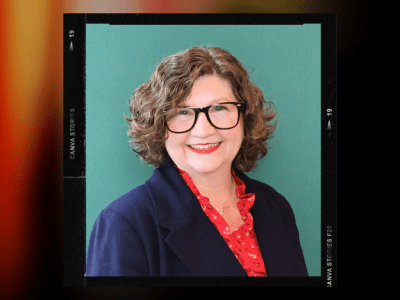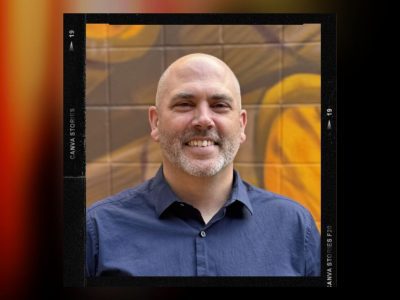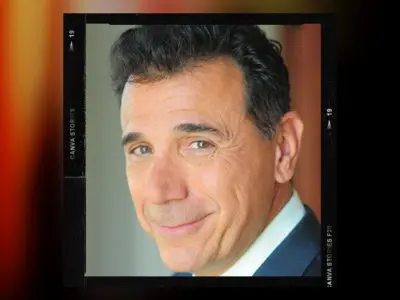Tackling Employee Burnout
With Karrie Brazaski
Use the buttons above to listen now.
Transcript - Tackling Employee Burnout
Rich: On this episode of team building saves the world.
Karrie: Oh, well look at rich. He always asks for help. He needs help. Why can’t he do that himself?
Rich: So are we talking about this? This is actually generally considered more of a mental health problem.
Karrie: I think of burnout I was a three legged stool. You’ve got to address all three. To really be a sustainable organization. That’s not going to burn your people out. I truly believe that we can bring back the culture of gold watch.
Rich: Hello Team! It’s me your old friend Rich Rininsland host of team building, saves the world, the show where I speak to the leaders and innovators and employee wellness and corporate culture and how it reflects in the world of today. And today we’re discussing the burnout with speaker and virtual trainer, Karrie Brazaski. But first, I need to share some love with my supporters at team bonding.
If your team is ready to experience teamwork through the power of play, the visit team bonding.com to learn more. Now team joined me welcoming the resilience and high-performance trainer with Redwood executive coaching, Karrie Brzezinski. Hello, Karrie!
That is a small group of people. I keep tied up under my desk just to applaud you. That’s their entire. Welcome. Thanks so much for coming on the show.
Karrie: I’m so glad to be here. Thanks for having me.
Rich: So let us start off just, if you can introduce yourself to my team out there, tell them a little bit about yourself, how you got into this industry.
Karrie: So I am, uh, actually trained as a nurse. I’m a 30 year nurse and I was running hospitals, um, for, uh, almost 15 years until I thoroughly burnout and walked away, um, without a plan. So now I am extremely passionate, um, that people ha get to the pinnacles of their careers and they’re enjoying life and they don’t get there and just kind of look around and go.
I did all this for this, you know, I gave up being a cupcake mom for this. And, um, or just is feeling like stress and burnout, knock them out of the game. And so making sure that we have tools and resources so that people don’t feel like they have to walk away because I did it without a plan and I don’t recommend it for anybody.
So that’s why I advocate for resilience and wellbeing. Um, cause your staff really.
Rich: So we have been talking a lot in the podcast already about the great resignation about rage quitting, about where people are. Let’s talk about burnout. Let’s talk about what gets them up to the point where enough isn’t it.
Is there a definition right now that people are looking out for burnout itself?
Karrie: Well, you know, the world health organization actually has a defined definition and that it’s only a work phenomenon and it’s that unrelenting stress, um, that we’re not, we we’re, we aren’t able to take care of it. Um, I like to just kind of put it kind of more to what it really means to people is the chronic go, go, go, go.
No Abel, no ability to break away and create some balance in your life. And it’s kind of the churn and burn. And if they’re in leadership, they’re paid to make everything look good, but they crumble on the inside. So I think that burnout is kind of the. Silent phenomenon that happens because one day everything is great and it’s just something that breaks the dam and it, and it’s, it’s all those little things, you know, I come from healthcare and we talk about it being, you know, a million paper cuts to the heart and burnout’s kind of the same way.
It’s like a million little burn pokes until finally you go up in flames and you look at it and you think that wasn’t even that big of a deal, but it was enough to be where I just say. I can’t do it. I throw up my hands. I’m done.
Rich: Okay. So as you’re saying, this is not a pandemic issue. This is definitely something that has been occurring.
As long as people have had jobs.
Karrie: Correct. I think the pandemic, um, amplified it. And it also, um, the tools that people were using pre pandemic, some of those went away. And so like if you were one that socializing and, and creating community within your organizations, and now you have to be isolated or, you know, gym closures, all these different things that people have.
Um, they needed to find new tools to build resilience. I always tell people the tool works until the tool doesn’t work anymore. And a carpenter doesn’t go to build a house with just a hammer. So you have to have multiple things. And unfortunately, when it comes to stress and burnout, sometimes we have some really bad things that we.
Pull out of art, you know, like I’m going to have that drink every night or, you know, I’m going to sit on the couch and I’m going to eat my ice cream and my chips. And so sometimes they’re not always healthy things and it just kind of exacerbates us, but yeah, it’s really just being able to create that balance
Rich: okay, well, what is the balance? What are we talking about? Uh, cause we’ve, we’ve heard the term work life balance. Can you define, is that what you’re meaning is? And can you define that?
Karrie: I think it’s different for everybody. And I hate when we say balanced because people think that that’s worth work-life equal, right?
And it’s not, we know that a scale, you know, if you look at, you know, those scales that kind of go up and down, um, from side to side, to have it balanced in equal, you have to have the same weight on each side, but most of the time that’s not how scales work. One side’s up one side’s down. And so I like to kind of look at work-life balance as I go to work, to sustain the lifestyle.
I’ve become accustomed to sure. That’s what everybody, I mean, nobody’s doing it for free. And it needs to balance my life. But for so many people, when the stress gets so high or the work demands are so high, it’s no longer supporting their lifestyle. It is becoming their life. Your job should not be your life.
And so being able to break away, have the ability to. I turn it off. You know, so many times we’ve gotten into everybody is, you know, we ha we have this technology. And so we take our email with us. We take our phone calls with us. We are texting we’re all of these things, and you’ve got to create balance in your life.
And, and with balance, you have to create the boundaries to be able to know when, to turn it off and turn it on. And even as leaders you’re setting the stage of. Acceptable. And so you have to be even more on task of creating the boundaries so that you have that breakaway and that you have a life that people kind of want to emulate.
If you look like, you know, you’re, you’re just down in the dumps. And as a matter of fact, if you read the research lately more and more leaders are wanting to leave because they’re burnout because. What they leave in the morning and what they go home to at night is way more important than anything they do during the day.
Hopefully people don’t know it while you’re doing it, but that’s why we do it. It’s for our families, it’s for our livelihoods and for our lives. And so we need to be able to separate work. Like there’s this you’ll hear. Um, work-life integration makes my skin crawl. I do not want my job. Integrated into my life.
I want to be able to have some separation now it needs to be complimentary, but I don’t want to integrate my job into my home life.
Rich: Yeah. My grandfather used to have the saying, you know, are you going to live to work? Are you. Correct, but it’s interesting that you bring up leadership because that’s not something people generally first think of when they think of burnout.
You know, they’re always thinking about the frontline workers. They’re thinking about the people of the bottom of the totem pole. What kind of problems are leadership?
Karrie: So it’s two different ways in which you look at it. But I think that, um, leadership sets the culture and culture can really impact the way in which people operate within an organization.
And whether you’re going to have. A culture that values my home life and my time away. Or am I a culture where I send emails at nine o’clock at night? And I expect the answers at 8:00 AM when I get back, you know, it’s what are you setting? And so I do think that leadership sets a huge precedent of how.
The organization’s work. And when you create a culture where we’re going to value time off, we’re going to not do meetings at a certain time because we know my husband always says, let’s not let a good meeting get in the way, or let’s not let work, get in the way of a good meeting, you know? And, and so it’s, it’s valuing people’s time.
It’s creating the separation, you know, encouraging people to go to lunch. And what are you rewarding? As a leadership team, are you only valuing and recognizing the people who go above and beyond in hours, or is it the outcome,
Rich: but what is,
Karrie: what are you perpetuating in your organization,
Rich: but what is, what about the leaderships than the leaders themselves?
What are they.
Karrie: Oh, they are facing, you know, they, they have the pressure of everything going on in an organization. And right now the pandemic is really. I think it’s hit everybody, but leaders in particular, they’ve had to change the way in which they lead. If you have had a, everybody comes to the office or, you know, a common area and you interact, you’ve now had to change it because now you are trying to manage a hybrid team or a virtual team, and they don’t have those skills.
They have many people in leadership. This is my personal opinion. Well, really good at their job. And then they got promoted into leadership. We’ve got to give people the way in which they can be leaders to truly be effective. They need to be able to communicate now more than ever. Communication is paramount.
People need it. And want it. And not all leaders know how to do that well, and they’re struggling themselves. They’re trying to keep it all together. They’re trying to be there for their teams, but typically there’s no one supporting the leaders. So what kind of train posts to do
know
Rich: how to do it all? Well, what kind of soft skills training that you’re talking about?
Can a leader look for? I mean, what, what can be made available to them?
Karrie: Well, I think a portion of it is knowing. That it’s okay to not know everything. The biggest skill that I, I find kind of lacking in leaders is being able to say, I appreciate that problem. Let’s solve it together. Cause I don’t have an answer.
And it’s okay to not have all the answers or, you know, I don’t know how to solve this right now, but let me go explore it and then come back. And it’s that follow-up back, you know, so many times teams will take stuff to the leader. Here’s a problem. We’re really stressed in this. And they’re like, okay, I don’t know how to fix this.
Let me go, let me explore. But nobody ever comes back and tells them about. And so the it’s a communication. So then I get frustrated as a frontline person because I have voiced this concern, I believe in my team and this organization enough to voice my concern, but nobody ever gives me any feedback. And so it’s getting the feedback back to those people that the communication is probably one of the biggest opportunities.
And then it’s you creating the balance? You know, as a leader creating kind of like what we talked about earlier is set boundaries around your time and then help people set boundaries around their time and then facilitate within the team that it’s okay to ask. We’re really bad about asking for help?
Well, we’ll say like, oh, well look at rich. He always asks for help. He needs help. Why can’t he do that himself? Instead of like, oh my gosh, rich, thank you for not drowning for a day and a half and everything. And just asking people for help and B and the other is as a leader, stop going to the same person all day.
Maybe Sally is really good and she’s my go-to person, but if I constantly go to Sally, one Sally is going to get burnout. Cause she’s not able to do everything she wants, but I’m also not giving rich the opportunity to step up and shine.
Rich: Speaking of stepping up and shining. Can you give me one brief second, Carrie, I need to step away just for a quick second, Karrie I need to tell my team out there all about a company.
I am very proud to be. Team bonding team bonding was founded over 20 years ago with one simple question. How can employees have a great time while fostering strong, authentic bonds between people who work together? They’ve created a catalog of innovative events using the power of play as a learning tool and tapping into the correlation of work and.
From scavenger hunts to jeopardy and so much more the team bonding of activities live virtual and hybrid maximizes the impact of team building with an accent on fun to visit team bonding.com to schedule your event. Team bonding when you want seriously fun results. And we are back with Karrie and we are still talking about burnout.
So Karrie you had mentioned something in the pre-interview that it’s very fascinating to me that there is a difference in genders and what’s been going on with them talking about burnout. Do you want to talk about that for a little bit?
Karrie: And so this is generalization, so we don’t want anybody to, you know, um, but kind of when you.
Look at what’s happened during the pandemic research tells us women have a higher propensity of burnout than men do. And part of that is believed to be a portion of mental load in that women will internalize and process. All a lot of different things that the male gender typically doesn’t even take into account.
I take it into my family and use the example of, you know, like my husband. Does he know when the next vet visit is, does he even know who our vet is? You know? And does he know that in February? And that we all need our dentist appointments. And so these are there’s these things that we just kind of mentally catalog in our brains of women that men typically don’t do.
It doesn’t mean that all men don’t, but it just adds to that level of burden and that emotional and mental load that women are having. In addition to, when you looked at kind of the overall household things that do women still have the propensity of managing the home over men. And so you, you kind of compounded all of it.
And then if you had, you know, the stress of schools being closed and this and that, it was just an added level of burden that have really impacted women.
Rich: Hmm. And I do want to point it out here just on the record. I kind of promised we wouldn’t poke fun at Karrie’s actual husband, but she did anyway. That was all on you.
So are we talking about this? This is actually generally considered more of a mental health.
Karrie: Well, so I don’t like to say that it’s a mental health problem. It’s a resilience problem. It’s a boundaries problem. And you can put it into mental wellbeing. When you look at the, um, overall performance of your team as a leader, as the team overall, the ha you know, I love that you will, you all do play that happier people.
The higher their productivity is the happier people are the less depressed they are, the less depressed they are and the more productive they are. And so I think it just goes into that whole wellbeing, um, and being good people, you know, who wants to be around a bunch of miserable people who. To work in an environment where they don’t feel valued, who wants to go into a work that is toxic things that we can do to remove that and remove the stress.
Now, world is stressful and resilience is all about how you can get knocked down and pop back up. How resilient is your team? And we hear this a lot with, you know, like kids, oh, they’re resilient. They’re resilient. Well, so as a rubber band, I stretch it. I stretch it. It always comes back, but after awhile it doesn’t go back to the original rubber band.
Right. And so resilience is yes. Popping back up, but sometimes you’ve got to pivot it or you’ve got to add some structure to it because I don’t ever go back to the way that I was before.
Rich: Um, okay. So let’s talk about some of the things we can look for it to know that burnout might be it. I mean, what are symptoms?
Not only for ourselves, but for management to look for in their employees and themselves
Karrie: so the classic for leaders to look at it in themselves and their team is this high performer and like we said, Sally, I always go to her. She always gets everything done. She’s happy she’s doing it. And all of a sudden she’s missing deadlines, not making appointments.
She is, has always been like this pretty happy go lucky kind of person. And now they’re short or the are, you know what? I don’t care. I don’t care what we do. Right. I don’t care make the decisions. And you’re like, wait a minute. She’s always the one that helped me make these decisions, which is just like, And it’s that level of disengagement or in, in specific areas.
Like I can’t, I don’t have the energy to take on this battle anymore. Just tell me what. And you, and you get this lack of engagement where they just kind of pull back. Um, and, and I used to think that it was because they become crusty and hard. Like I’d tell about nurses who, you know, you look at that ER nurse, and they’re just so hard on the outside.
It’s actually a sign of burnout. It’s them trying to wall off their hearts so that it doesn’t become emotional painful anymore. Like, I can’t, I can’t deal with the struggle. So just make up the decision or they feel so the voice doesn’t isn’t heard anymore. And so the person who would bring up, Hey, do we have this opportunity?
Or here’s something that we could fix or here’s what I’m hearing people. Aren’t happy about that. And they go like silent.
Rich: How does leadership affect this? I mean, we’re, we’re talking about people coming to work. Sometimes work itself is just. But how does the leadership actually directly affect the culture that leads to this?
It
Karrie: leads to burnout,
Rich: leads to it, leads to burnout. Let’s talk about leading to burnout first, and then we’ll talk about how we can change
Karrie: it. Leaders become super busy and they sit in their office or they. And they kind of check out or they become micro managers and people no longer feel valued. I mean, research after research Gallop just came out with one, a couple of weeks ago that people want flexibility.
They want worthwhile work and they want to feel like they matter. And when those things don’t happen and I voice, but I get radio silence, right. If I never told that I do a good job. If I’m never given any type of feedback, it leads to burnout. The other thing that’s coming more and more clear is people not being challenged.
Okay. And I, I use the example of my son. We homeschool last year, we used a different program than what we do this year. And I said to him, I said, this seems like a lot harder. He goes, oh my gosh, this is so much harder, but I love it. And he’s getting straight A’s where last year he got A’s. Okay. So harder work because I’m challenged.
I want to grow and people want to know like, what’s the next step? How are you developing me? I truly believe that we can bring back the culture of gold watch you know, you save so many years and you get the gold watch. You know, people like, oh, nobody stays number percent, but what if you weren’t the one organization?
What if you put this together and you did change it? Cause people hate change and what’s hard is changing jobs. If we can build those things in there so that I feel valued. I don’t have,
Rich: so how do we do that? I mean, I’m sure there’s no, I’m sure there’s no.
Karrie: But there is no easy and it doesn’t come overnight, but you’ve got to invest in your leaders.
Leaders have to be good leaders because even the research there shows us most people leave because of a leader. They don’t leave the organization, they leave a leader. So it’s communicating. Okay, genuine feedback. Good, bad, ugly people need and want feedback of how to do a good job. And I hear it so many times of, well.
I told them all, I told them all. I told him, you know, maybe they’re trying to get somebody to improve performance or do some new outcome, but have you shown them? Um, people truly want to do a good job and people want to feel like, like I said earlier, they’re doing worthwhile work. And when they’re falling, short leaders need to step in and show people how to do a good job.
And maybe they don’t have the skillset, but they have somebody else who does, who can come in and show them how to do it. Instead of just, you know, I’ve told you three times, you’ve done this incorrectly. Well, then let’s show somebody how to do it. So communication is number one. The other is, like I said earlier, not always going to the same person, it’s having conversations and be.
Open to receiving the information. You can’t always change it. So acknowledge it, but don’t listen to respond, listen to gain knowledge so that you can better work with your employees. I think that leadership, your number one goal is to remove obstacles for your team so they can perform at a higher. Okay.
So you got to find out what those obstacles are. And from a burnout standpoint, it’s also set an example, set an example of how you create white space in your day that you take time out, maybe, you know, maybe you’re you’re an organization and you guys have always been burning churn. Start a meeting with gratitude.
It may sound weird when people come together, but when you do gratitude or, you know what, guys just bear with me. We’re going to do a couple of deep breathing exercises right here. Before we start this meeting. Um, what those things do is one, it changes our brain patterns. It takes us out of our. Sympathetic nervous system, which is our fight and flight, and puts us over into parasympathetic nervous system, which is I can rest rejuvenate and I can really have some cognitive conversations because I’m not in this KIDO state. So it’s, it’s little things that the leader does consistently.
Rich: Is it all on the leadership? I mean, does it all start and end with.
Karrie: Oh, it’s a multi, it’s a multi-pronged tool. I shared with you beforehand that I think a burnout I was a three legged stool. You’ve got the individual and the individual can do things so that I’m less reactive. I create, um, some calm and myself, and there’s all these activities that you can do as an individual.
Another leg of the stool is the culture, which we’ve kind of been talking about. And then the other is the environment and the environment. The organization has control over, and that individual has a little bit of, but you’ve got to address all three to really be a sustainable organization. That’s not going to burn your people out.
Rich: Let’s talk a bit about that culture that we’re looking at now, the pandemic hit and suddenly we’re no longer all in the same office space. If we were fortunate enough to be able to do that. So yet you do have an entirely different world now where everybody is just like you and me, small boxes on a screen.
This very drastically changed the culture. Didn’t it. And, and how fast or how best can we change the culture that it has this involved?
Karrie: I had a mentor one time, tell me when we were doing big culture change, you can change as quickly as the people will let you. Okay.
Rich: Um,
Karrie: so I mean, it totally depends on how engaged you have your team and how, and here’s the thing. If you’re in a hybrid, I actually read, they are the ones having the most trouble, a hundred percent remote, a hundred percent in person, right. They’re able to create the engagement. It’s the hybrid that is having the most difficulty.
And in another research I was, or another article I was looking at it’s the same with schools. The schools that are having the most trouble are the ones that have hybrid if they’re all remote or all in the building, they seem to be doing it. And if you think about it, it’s human nature to like structure even with little kids, you know, it’s like, tell me the rules.
You know, not that everybody follows them, but we like to know what the guard rails are, what the side things are. Um, we’d like to know what to expect on Tuesday. I do this on Thursdays. We typically do this. These reports are due on this day. We like to have that in the inability to predict. Causes great amounts of consternation for a lot of people, change is really hard for people.
So if you were all, you know, that’s one of the things with pandemic, it’s the change that’s created such chaos in people, but with the hybrid, you’ve got to come together with your team and find out what works. Talk to them. Listen to them. Chances are you have brilliance within your organization that you don’t even know.
And I think so many times we, which just as bad because you know, I’m an external consultant. So I want people to come in to me to help them. But usually, well, I would say usually a lot of times you have some amazing talent. That you’re not tapping into and oh, you might be able to say, you know, one person, like I cannot stand being on camera more than XYZ or this other person.
That’s like, I love it. I would love to have lunch meetings together where even if we’re all eating and you know, we’re looking at each other, that’s something that I want, or I need it. You just grow it with your team, find out what they want. And what they need because of you design it with what you think they need. Right. Okay. It’s going to fail.
Rich: It had sounded like in the beginning, a lot of people were trying to do the same. They had been doing when they were all face-to-face. But now just being able to do a right on camera and yeah. That’s where they were getting a lot of
Karrie: problems have meanings. Like why do you have to be on, on camera if you guys are really bonded?
Everybody knows what each other is. Every once in a while, just have an audio. Remember before video conferencing, we used to have conference calls.
Rich: No, I don’t remember that at all. We’re going on two years. No, I don’t remember that at all.
Karrie: You know, or pick up the telephone, you know, pick up the telephone and call somebody.
Maybe you have to text them to say, Hey, I’m going to call you. Please answer. I have clients who are like, text me. I don’t want to get on the telephone. I don’t want to answer. You’ve got to find out how people like to be communicated with, how do people like to be rewarded? How do they like to be, you know, recognizing.
And then honor it, it doesn’t mean that you have to do it that way a hundred percent of the time. But if you’ve got a team of 10 people and nine cannot stand being on camera, and there really is this whole zoom fatigue, because we’re looking at ourselves, we’re constantly, you know, picking, you know, this and that.
And we’re thinking that we think that everyone’s looking at us, but really it’s us looking at us. Nobody else is looking at you to lose some, you know, body language and this and that. So that’s another thing that, you know, leaders need to be aware of it or the other is the silent. Sometimes you need to listen to the silenced and if you have people and you’ve had a culture where those who stand up and those who make the biggest noise are the ones that get rewarded and get recognized or get anything.
Right. You’re going to have people who are just sitting there going, okay, just shut up. And you know, how much longer can we make? And so, you know, talk to that person and maybe you don’t talk to them on camera, but you know, you have a conversation where, you know, rich, I’ve noticed that you’re really quiet and I do value your opinion.
What do you think about this? The other thing that I think hybrid really pointed out is not everybody needs to be in that meeting
Rich: okay. Like how to
Karrie: start calculating, like, I like to calculate the cost, you know, if you’ve got 10 executives on a zoom call, you know, just for easy numbers, everybody’s making a hundred bucks an hour.
Was that really, was that much money or was it, you know, we’ve all walked out of the meeting with, well, that could have been an email and so I like to do, like in meetings, I like to do what’s called fist to five. And at the end of it, you know, everybody kind of holds up their fist and it’s 1, 2, 3, and then you put up a number from zero to five, zero being, this could have been an email.
This was a waste of my time to five. Oh my gosh. I’m so glad we all get together. Cause this was valuable. And if it’s less than four, how could we make this better? Now, you’ve got to have some trust in your group. You’ve got to build some GCAT and just go in there and you know, all of a sudden and, and do that.
But fist to 5 gives you, you know, this was a great meeting, but it probably should have stopped 20 minutes ago.
Rich: Plus you have to, you have to be really comfortable enough to feel free to throw up that zero. I mean, I can’t imagine anybody just being the first one to go. That was not good at their work,
Karrie: the leader. But I remember when I first started it, it was like, they were like, oh, it’s five. I’m like, really? Cause I thought this was. Good because here’s where we could have done this better. And here’s where I didn’t hold this together. And yeah, I probably should have ended this 20 minutes ago.
Rich: Once again, leadership stepping up.
I like it. So while it seems to me that the pandemic, at least the, the restrictions that were put upon us during the pandemic are winding down, give some advice to the people in the future, because right now it’s starting to get that uncertainty again. Are we going back to face-to-face or are we going to keep hybrid or are we going to, you know, does this all change over and over again and gives them advice for someone who’s afraid that that’s going to burn them out even more?
Karrie: Number one we’ll also have to, and this is on the personal level and it doesn’t matter whether you’re a leader of staff, number one, make your sleep a priority. And it has nothing to do with what’s going on in the office. But when you sleep at night, you give your body the ability to rejuvenate. There’s all kinds of hormonal things that go on.
There’s lots of rejuvenation in our body sleep is imperative. When we had little kids, we made sure they had bedtimes. We went naps. I mean, you can talk to moms, they will rearrange their morning schedule to make sure that their child gets a nap. Why? Because when they don’t, they don’t eat. They’re cranky.
They’re almost intolerable to be around. Adults are the same way. We just can’t tell you that you’re acting like a two year old.
Rich: Okay.
Karrie: Um, and so the other is take lunch, make time for you to step away from your desk. Step away from everything that’s going on and get lunch. And if you are a leader, You need to start recognizing people who get things done and get out of there out of work on time and take lunches instead of well, isn’t it nice.
She gets to have a lunch. Oh, it’s nice. She gets to leave on time every day. No change the paradigm because people come to work to sustain the lifestyle they become accustomed to. And so if you want an organization to flourish and if people are going to really feel like they matter. Stop taking away their lunch, stop having meetings at lunch.
And I even told leaders, if you have meetings at lunch and you don’t send your people home, you just stole 30 minutes of their time.
Rich: Karrie Thank you so much. This was a great conversation. Thank you for coming on board and being a part of it. I hope.
Karrie: Oh, yeah. I can talk on this stuff all day.
Rich: And we’re going to change just a little bit here because it’s going to be some fun time now because it’s time for my speed round.
Just that little bit of extra cheese that makes the chairs so much better. All right. The way this is going to work, Karrie is I am going over 60 seconds going to ask you a bunch of completely innocuous. They are silly. They are fun. The objective for you. It’s just try to answer as many of them as you can, within that 60 seconds.
If you are feeling at all competitive, the number to beat so far for season three is 10. Oh yeah. Yeah. Okay. So as soon as you hear the music, I’ll start asking questions and then we’ll begin. I’m ready. Fantastic. Hold on. Here we go. What’s your name?
Karrie: Karrie
Rich: How many kids do you have?
Karrie: One?
Rich: Do you have any pets?
Karrie: Zero.
Rich: If you can shop as a know how to get to the mat
, if you could shop for free at one store, which would you choose?
Karrie: Apple?
Rich: What TV family do you wish you lived in?
Okay. What personality trait has gotten you into trouble?
Karrie: My mouse,
Rich: which celebrity chef would you like to fix you? A meal?
Karrie: Ramsey, Gordon
Ramsey.
Rich: What is the best piece of advice you’ve ever received?
Karrie: Listen, more than you talk.
Rich: What do you like to do on a rainy day?
Karrie: Read a book and live in Arizona. It never rains.
Rich: Would you rather be the best player on a horrible team or the worst player on a great team?
Karrie: I don’t want to be on a great team. I don’t care if I’m play horrible.
Rich: What’s your favorite thing about Arizona sunshine? Karrie 11, you got 11. Correct? Well done. See was nice and easy. You were just flowing well done. So can you tell everybody out there, if they want more information about this topic, where can they find you and where could they find more?
Karrie: So LinkedIn, I am out there, Carrie ASCII or our website, Redwood executive coaching
Rich: Fantastic, Karrie, one more time.
Thank you so much for coming on board and thank you, my team out there. We’ve wrapped up yet. Another episode of team building saves the world. If you’ve enjoyed this episode, whether you’re new to the podcast or an old fan of the show, please be sure to share this podcast with everyone. You know, whether they, your coworker, your friend, your family, whichever it all helps us to share this vital information.
You can find out all about us, including all past episodes of the podcast@teambonding.com slash. You can also find us wherever you find your favorite podcasts, Google podcasts, apple podcast, Spotify, wherever you listen. I promise we’ll be there and don’t forget to look for us. And all the social media is a team bond podcast and leave us a message telling me what you like about the show.
Or if you have an idea for a future topic on the podcast, we want to hear from you. And if I like your comment, I may even mention it if you drop us up. But before we say our farewells. One more episode of team building saves the world. Please never forget the, if you are within the sound of my voice, you’re on my team now and I am forever going to be on yours so long team.
You have a great day and I’ll see you next time.
It’s been
said that you learn more about a person in an hour of play than in a year of conversation. So why not put your coworkers to play with the help of the team at team bonding team bonding was founded over 20
years.
March 15, 2022
What does company culture have to do with employee burnout?
In this episode, Rich speaks to Karrie Brazaski, from Executive Coaching on how cultivating a supportive environment in your office is one of the key ways to help prevent employee burnout.
She believes leaders are the ones who help companies set the tone and the culture within the workplace. Empowering and supporting the leaders within your organization with the right resilience tools before burnout begins will keep their team together and produce quality work.
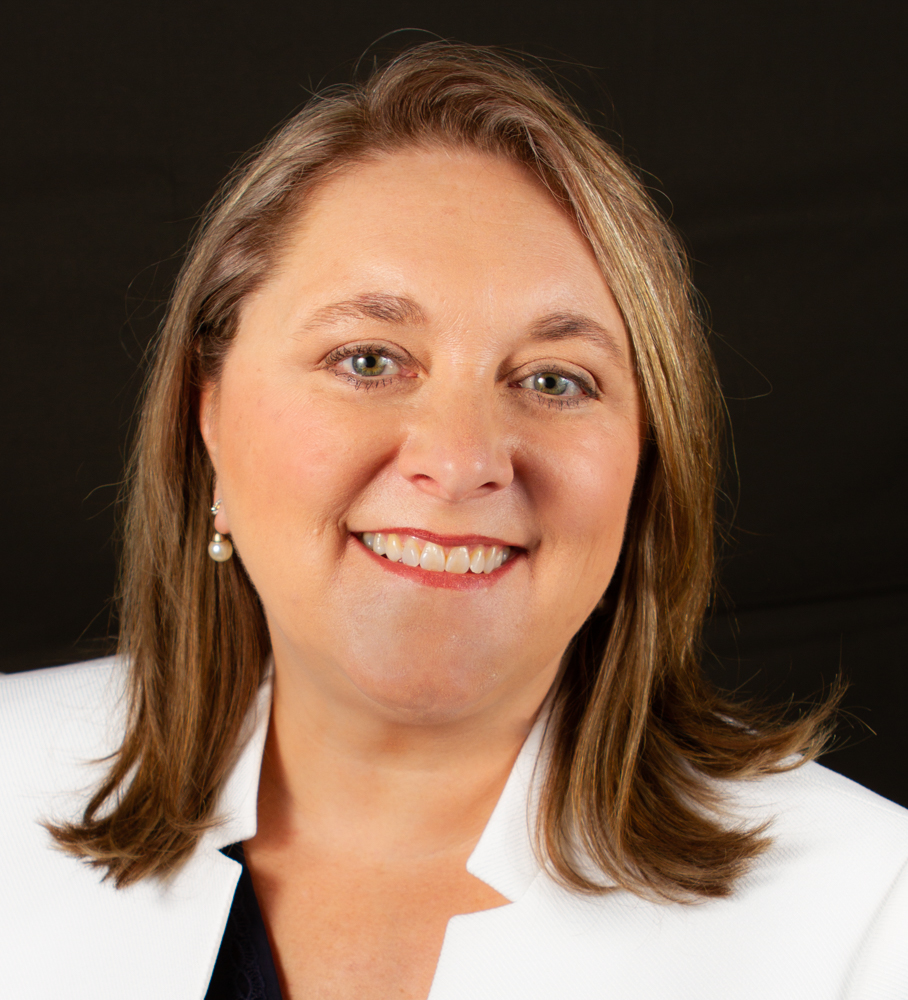
As a nurse and healthcare executive for three decades, Karrie has witnessed the damage to organizations caused by turnover. She has gone from a burned out hospital executive to an advocate for wellbeing and burnout recovery programs as part of promoting sustainable cultures. Karrie works with individuals and organizations to create leadership strategies to retain key talent and ensure stress and burnout are not the cause of lost productivity, profits, performance, or livelihood.
" Leadership sets the culture and culture can really impact the way in which people operate within an organization."- Karrie Brazaski
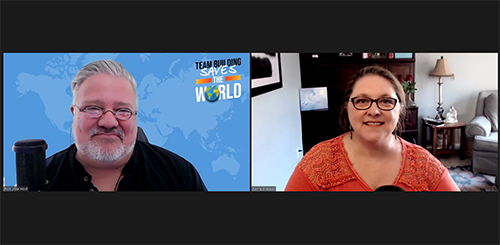
Get more human resources and leadership advice.
Less drama? Greater teamwork and job satisfaction? TeamBonding is here to help you build a stronger and happier team. Subscribe to get our team building podcast and thought leadership blogs sent straight to your inbox.





